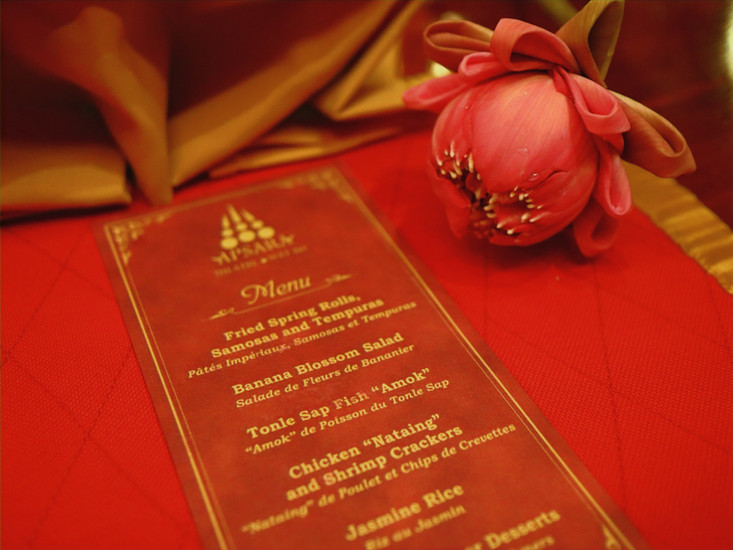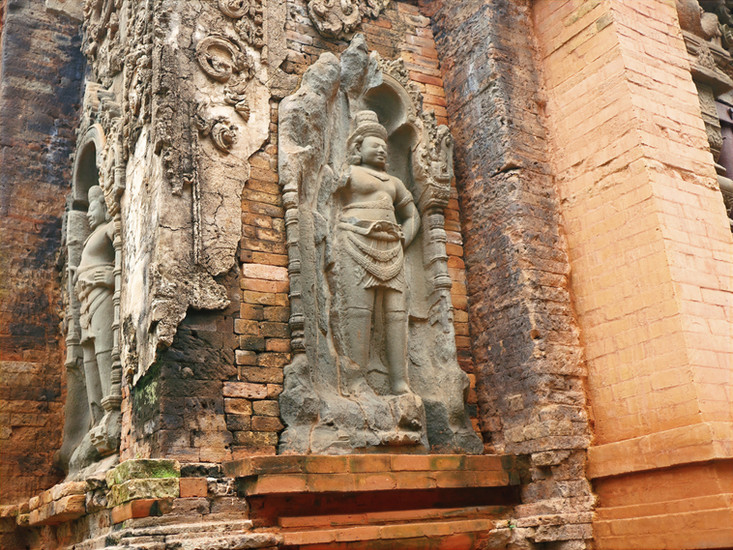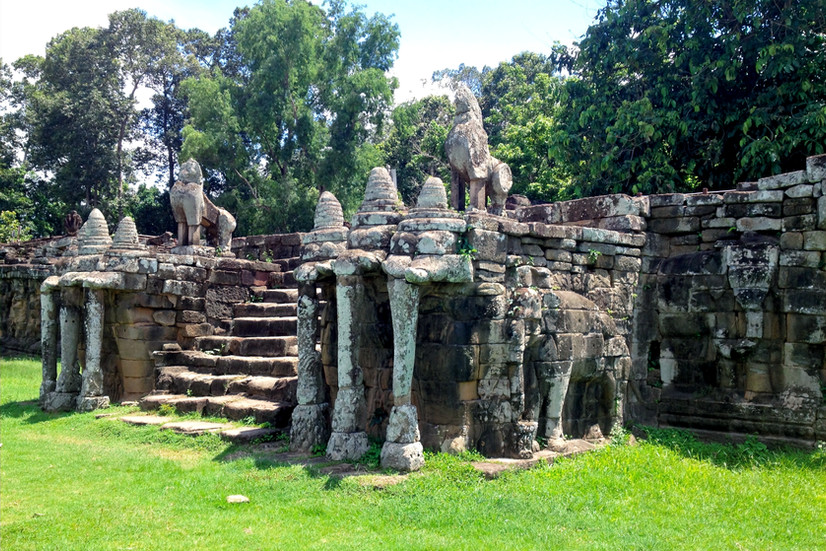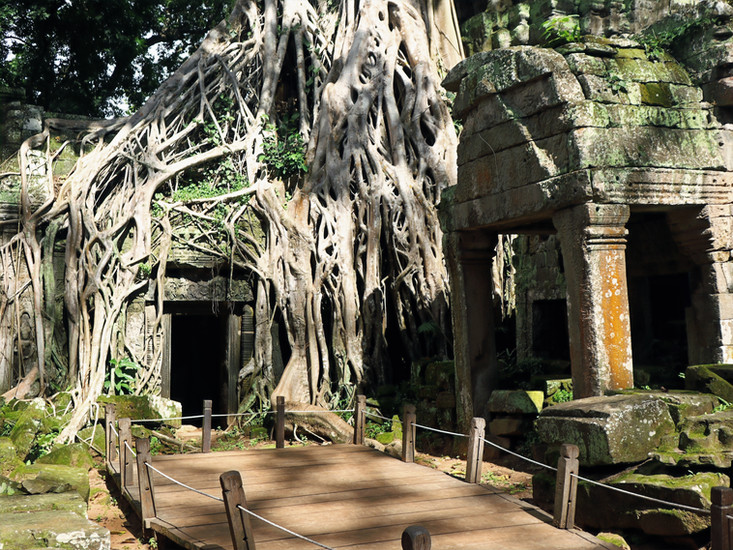The Cambodia’s Green Season: A Perfect Time for Temple Exploration
- Han'z Socials

- Sep 4
- 5 min read
Updated: Sep 5

Cambodia's green season offers a magical experience for travelers seeking to explore the ancient wonders of Siem Reap. Running from May to October, this monsoon period transforms the landscape into a lush paradise with vibrant shades of green. Far from being a deterrent, the green season presents unique advantages for visitors:
Significantly fewer tourists crowding the temples, allowing for more peaceful exploration
More comfortable temperatures compared to the scorching hot season
Predictable weather patterns with short afternoon downpours rather than all-day rain
Spectacular photo opportunities at Angkor Wat with full moats creating perfect reflections
Budget-friendly accommodations with lower hotel rates and special deals

Despite occasional rainfall, mornings and evenings typically offer plenty of sunshine for comfortable sightseeing, with the added bonus of more atmospheric conditions and lusher surroundings.
Getting to Siem Reap
Traveling to Siem Reap from Phnom Penh takes approximately 5.5 hours by bus depending on traffic. For comfort, I chose the Vireak Buntham Bus airbus service that runs once daily. At $25 per journey, it provides excellent value with amenities including WiFi, massage chairs, and an onboard restroom.
Accommodation
Taking advantage of green season rates, I booked the Hillock Resort & Spa through Trip.com. While located a bit further from the main tourist areas, this peaceful retreat provided the perfect respite from city noise.
Local Transportation

Throughout my stay, I relied on my trusted tuk-tuk driver whenever I’m in Siem Reap who provided transportation from the moment I arrived at the bus station until my departure. This arrangement offered both convenience and consistency for me.
Day One: Cultural Immersion

I began my Siem Reap experience with dinner and a cultural performance at Apsara Theater. For approximately $33, guests enjoy a multi-course meal (drinks not included) while watching traditional Khmer dance performances. This is an excellent introduction to Cambodia's rich cultural heritage.
Day Two: Sacred Mountains and Jungle Temples

My second day took me to Phnom Kulen, a sacred mountain range located 48 kilometers from Siem Reap. Known as the birthplace of the Khmer Empire, this site holds immense historical significance as the place where King Jayavarman II declared independence and established his kingdom in 802 CE.

The journey requires about 1.5-2 hours by car from Siem Reap. Since tuk-tuks cannot navigate the mountain roads, I hired a motorcycle driver for the ascent. For tuk-tuk I paid $30 to Phnom Kulen and several temple hopping on the way back to the city.
Key attractions at Phnom Kulen include:
Peong Ta Kho or Amazing Cliff - stunning panoramic views of the lush, jungle-covered landscape and the deep canyon.
The River of a Thousand Lingas - riverbed carvings that blessed water flowing to Angkor plains
An 8-meter reclining Buddha statue carved into sandstone at the summit
A stunning two-tiered waterfall with natural swimming pools
Preah Ang Thom Pagoda, an important pilgrimage site

Beng Mealea Temple: The Mysterious Jungle Temple

After descending, I visited Beng Mealea Temple, located about 40 minutes from Phnom Kulen. Often described as having an "Indiana Jones" quality, this largely unrestored 12th-century temple provides a glimpse of what Western explorers might have experienced when rediscovering Angkor.
Wooden walkways facilitate exploration while preserving the ruins. Beng Mealea requires an additional $10 entrance fee but since i have the VIP pass as an expat its accessible for me to visit all temples as part of the perks living and working in Cambodia for the last 2 decades.
Bakong Temple: The First State Temple of Angkor

My final stop was Bakong Temple, one of the earliest major temple mountains built during the Khmer Empire (881 CE). This pivotal structure established the temple-mountain concept that would culminate in Angkor Wat. Originally Hindu but later modified for Buddhist worship, Bakong offers a fascinating glimpse into the evolution of Khmer architecture.
Angkor Wat: The Crown Jewel of Khmer Architecture

My third day focused on the main Angkor Archaeological Park. I began with Angkor Wat, Cambodia's iconic symbol and the largest religious monument in the world. Built between 1113-1150 CE by King Suryavarman II, this architectural marvel features five towers representing Mount Meru, with its central tower reaching 65 meters.
The walls showcase nearly 2,000 celestial dancers (apsaras) and elaborate bas-reliefs depicting historical events, mythological stories, and scenes from daily life. During green season, the reflection of Angkor Wat in its moat creates one of Cambodia's most iconic images.
Angkor Thom: The Great City of the Khmer Empire

Next came Angkor Thom, the last capital city of the Khmer Empire. Built by King Jayavarman VII in the late 12th century, this 9-square-kilometer walled city represents the height of Khmer urban planning.

At Angkor Thom's center stands the Bayon temple with its famous 216 serene stone faces. Unlike Angkor Wat's mythological scenes, Bayon's bas-reliefs depict historical events and everyday life, providing invaluable insights into 12th-century Cambodia. I can go up at the moment as the third floor under restoration.

Other significant structures within Angkor Thom include:
Baphuon: A massive three-tiered temple mountain later modified to include a reclining Buddha
Phimeanakas: The king's personal shrine where legend says he met a serpent goddess each night
The Terrace of the Elephants: A 350-meter platform for royal ceremonies
The Terrace of the Leper King: A platform with intricate underworld deity carvings
Prasat Suor Prat: Twelve towers in Angkor Thom where ancient tightrope performers once entertained royalty. The name literally means "Towers of the Rope Dancers."
Ta Prohm: Where Nature Embraces Ancient Architecture

Next stop was Ta Prohm, the atmospheric "Temple of the Trees" which made famous by Tomb Raider where ancient architecture embraces nature. Built in the late 12th and early 13th centuries by King Jayavarman VII, this Buddhist monastery was originally dedicated to the king's mother.
Final Thoughts
Visiting Siem Reap during the green season offers a unique perspective on Cambodia's ancient wonders. With fewer crowds, lush landscapes, and dramatic lighting, it's an ideal time to experience the magic of Angkor. The occasional afternoon shower is a small price to pay for the atmospheric beauty and tranquility that this season provides.
During my stay, I did not get the chance to visit Bakheng Temple for sunset, Takeo Temple and the floating village as the rain started belting heavily toward late afternoon to evening but manage to ride pass Pre Rup Temple. Perhaps that for another visit. Overall, I always enjoy my time in Siem Reap—even when I'm not visiting temples, I still take evening drives around the Archaeological Park.


































































































Comments